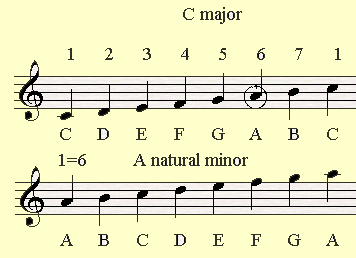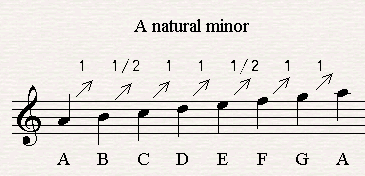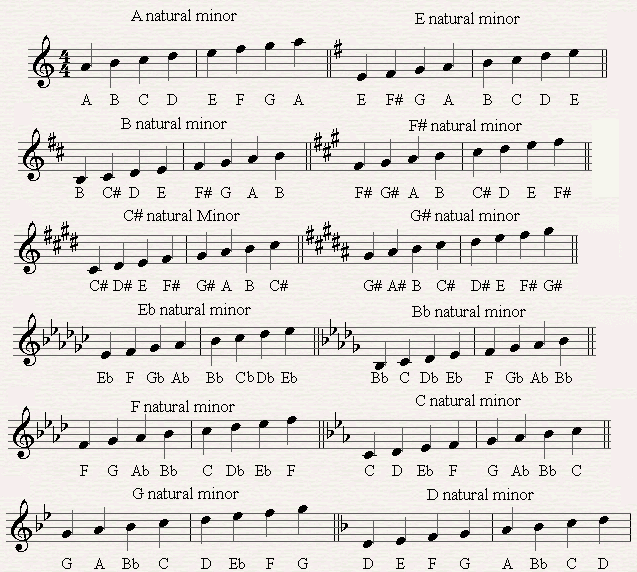Natural Minor Scales
Home » Piano Theory » The Natural Minor Scales
The scale is often interpreted as more melancholic scale in relationship with the major scale. However some up-tempo pieces are written in this sort of scale.
While there is only one sort of major scales three different variations of the minor ones exist.

If we start to play a major scale from its sixth note we get its parallel natural minor one. (Natural? yeah, I'll explain later...) So If we take C major for, starting from A (the sixth note)we get the A minor which looks like this.
Let's see what is the order of whole steps and half steps in the scale.

Bottom line, here's what you have to doin order the get the minor mood going. Start on the first note and follow the formula.
W h, W W h, W W
Question
Find are the parallel minor of G major and D major?
Try to play these scales on the piano.
Here's a list that will help you to get to know these minor scales better.

Here's a free printable version of this list to download.

There are few reasons to learn to play piano scales. Scales will help you to understand the logic behind a piece you play, and give you tools to build piano chords and harmonize tunes by ear, and if you want to improvise you should use scales to play a solo to really impress your friends and fellow musicians.
In order to get the full potential of piano scales you should go through the Rocket Piano Ultimate Learning kit. With Rocket Piano you'll learn to use scales to improvise by learning about melody, harmony, chords, arpeggios, and how to play chord progressions in any key. Click here to check out the Rocket Piano Learning Kit Now!














